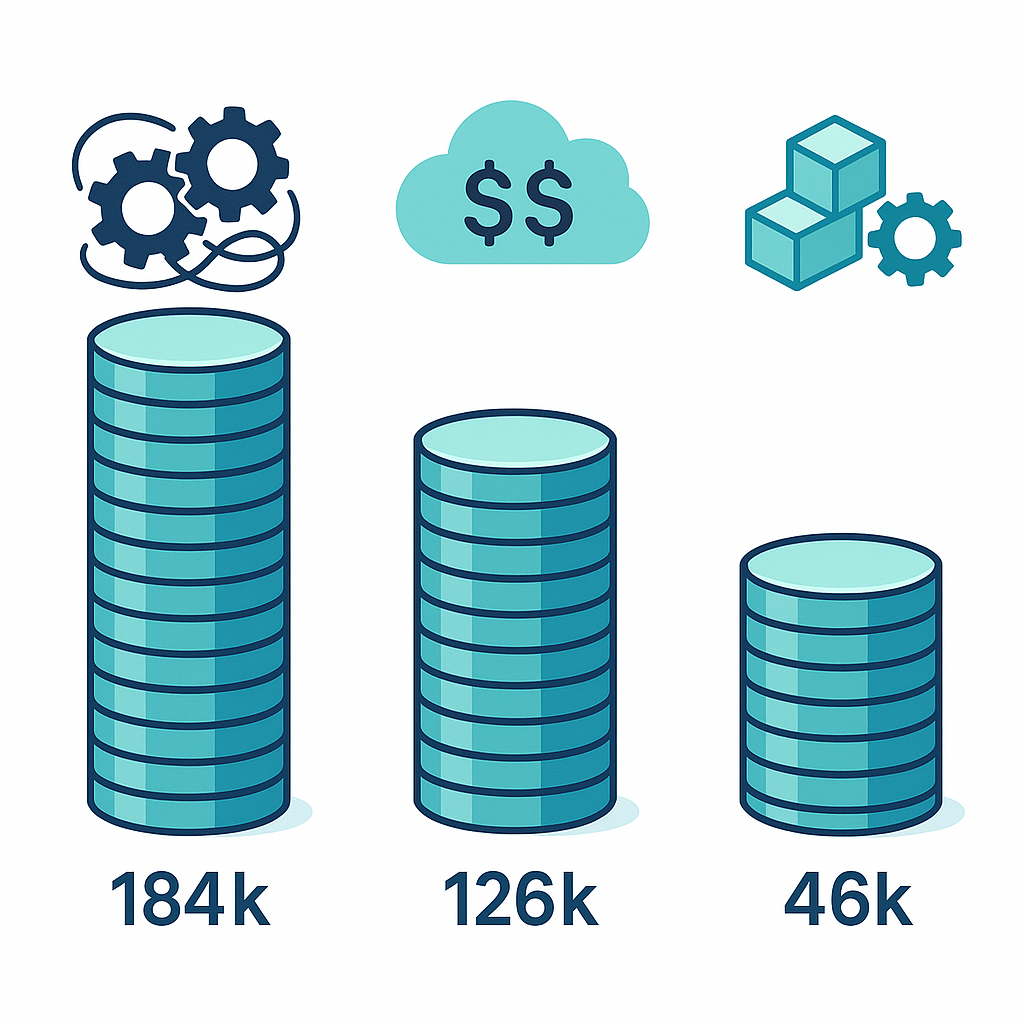
As a non-technical founder, you're probably more comfortable talking about market fit, customer acquisition, and revenue streams than you are about Kubernetes clusters, load balancers, and database scaling. But here's the thing: infrastructure decisions can make or break your startup's budget, timeline, and ability to scale. The good news? You don't need to become a DevOps expert overnight. You just need to understand the key decisions and avoid the common pitfalls that can derail your business.
Let's start with a reality check. That developer who says "we can just throw it on AWS" or "Docker makes everything easy" might be technically correct, but they're glossing over complexities that can cost you months of development time and thousands in unexpected bills.
When your team builds infrastructure from scratch, you're not just paying for servers. You're paying for:
Here's what most founders don't realize: infrastructure complexity grows exponentially with your success. What works for 100 users becomes a nightmare at 10,000 users.
Think of infrastructure platforms like Convox as the difference between buying a car versus building one from scratch. Sure, you could source your own engine, transmission, and electronics, but why would you when you can buy a reliable vehicle that just works?
Convox is an open-source Platform as a Service (PaaS) that you can install on your own infrastructure. In business terms, this means:
You keep control of your data and costs - Unlike hosted platforms where you're locked into their pricing model, Convox runs on your own AWS, Google Cloud, Azure, or Digital Ocean account. You see exactly what you're paying for and can optimize costs directly.
Your team focuses on product, not plumbing - Deploy your first custom app by following the App Configuration Guide instead of spending weeks configuring Kubernetes clusters.
You get enterprise-grade features without enterprise complexity - Rolling updates respect the deployment configuration to control the minimum number of healthy processes and maximum number of overall processes, ensuring your site stays up during deployments.
Before making any infrastructure decisions, ask your technical team these questions:
If they say "just a few days," be skeptical. Proper infrastructure setup with security, monitoring, backups, and scaling typically takes weeks or months.
Convox allows you to easily scale any Service on horizontal concurrency (number of Processes), CPU allocation, memory allocation, and GPU allocation. If your current solution requires manual intervention during traffic spikes, you're setting yourself up for 3 AM emergency calls.
When a Release is promoted, new Processes are gracefully rolled out to avoid disruption to the App. If your team can't explain how they'll achieve zero-downtime deployments, you're risking customer-facing outages.
You can easily roll back to an old Release with Convox. Ask your team: can we roll back a broken deployment in under 5 minutes?
Let's look at a practical example. Imagine you're a Series A startup with 50,000 active users:
Total: $184,000/year
Total: $126,000/year
Total: $46,000/year
The hosted platform saves you developer time but costs 3x more in hosting fees. Convox gives you the best of both worlds: the simplicity of a platform with the cost efficiency of running on your own infrastructure.
Annual savings compared to DIY: $138,000
Annual savings compared to hosted platforms: $80,000

When evaluating infrastructure decisions, focus on these business metrics:
Time to Market - Once the deployment has completed, verify the app is running by running the convox services command. With Convox, you can deploy in minutes, not hours.
Developer Productivity - Running your application locally requires a Development Rack to be installed. Your developers can work in an environment nearly identical to production, reducing bugs and deployment issues.
Operational Overhead - Convox allows you to execute one-off commands on your App for starting a shell for debugging purposes or running administrative commands such as database migrations. These operational tasks become simple CLI commands instead of complex procedures.
Docker is a tool, not a solution. Convox uses docker to compile code into a Build, but it also handles orchestration, scaling, load balancing, and monitoring.
Yes, but Kubernetes >= 1.22 is not supported as it deprecated an Ingress resource name which Convox uses. Raw Kubernetes is incredibly complex. You want the benefits without the complexity.
An App is a logical container for Primitives that are updated together through transactional deployments. Start simple, then split services as you grow.
Here's a simple framework for making infrastructure decisions:

The beauty of platforms like Convox is that you can start simple and scale up. Create a Free Convox Account and Install a Rack to get started. Your team can deploy their first app in minutes, not weeks.
Deploy a Sample App to see how easy it is to get from code to production. Make a Code Change and Redeploy to experience the deployment workflow. Perform a Rollback to understand how you can quickly recover from issues.
As a founder, your job isn't to understand every technical detail. It's to make decisions that give your business the best chance to succeed. Infrastructure decisions impact everything from your burn rate to your ability to respond to market opportunities.
Don't let infrastructure become a bottleneck that costs you customers, revenue, or competitive advantage. Choose solutions that let your team focus on what makes your business unique, not on the plumbing that keeps it running.
The question isn't whether you can afford to invest in proper infrastructure. The question is whether you can afford not to.
Ready to save $80,000+ annually while giving your team enterprise-grade infrastructure? The smartest infrastructure decisions combine simplicity with control, and the right platform can make all the difference in your startup's success and scalability.
Get Started Free with Convox today, or contact our team for free white-glove onboarding and personalized guidance on making the right infrastructure decisions for your startup.
For comprehensive infrastructure guides and founder resources, visit our documentation.
